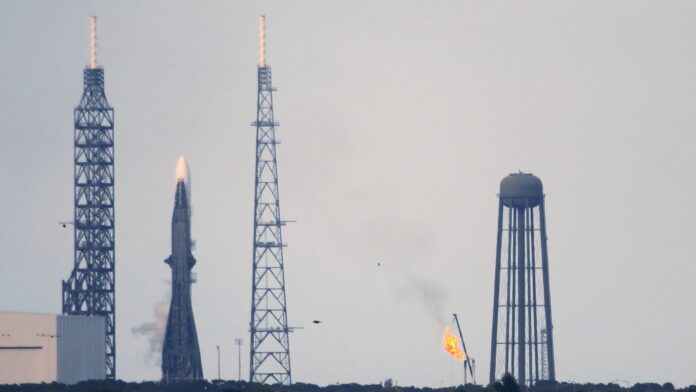Blue Origin’s highly anticipated second launch of its New Glenn rocket, carrying NASA’s twin ESCAPADE orbiters to Mars, has been scrubbed due to intense solar storms. The postponement comes after an initial attempt on November 9th was thwarted by unfavorable weather conditions.
Initially scheduled for a 2:50 p.m. EST liftoff from Cape Canaveral Space Force Station on November 12th, the launch had been delayed until space weather conditions improved. While auroras blazed as far south as the Florida launchpad, indicating the extraordinary strength of these solar storms, NASA decided to prioritize the safety and integrity of its spacecraft.
Blue Origin, in a statement posted on X, confirmed the decision: “Due to highly elevated solar activity and its potential effects on the ESCAPADE spacecraft, NASA is postponing launch until space weather conditions improve.”
While an alternative launch date has yet to be announced, Blue Origin is diligently analyzing upcoming opportunities. This includes factoring in both predicted space weather patterns and available launch windows within the confines of the Federal Aviation Administration’s (FAA) regulations. The FAA recently instituted a temporary halt on all daytime commercial launches due to strain on air traffic control systems caused by the ongoing government shutdown.
The ESCAPADE mission, representing NASA’s first foray to Mars since the Perseverance rover’s successful launch in 2020, faces further complications with this unexpected delay. Developed by Rocket Lab, the two orbiters are poised to provide crucial insights into how solar wind contributes to the erosion of Mars’ atmosphere. The delicate balance of charged particles constantly streaming from the Sun and Martian atmospheric defense mechanisms remains a key scientific puzzle for planetary scientists.
The timing of these setbacks couldn’t be more sensitive. Earth itself is experiencing heightened interactions between its atmosphere and intensifying space weather as our solar system cycles through a period of elevated activity. This underscores the ever-present complexities inherent in launching missions into deep space.


































